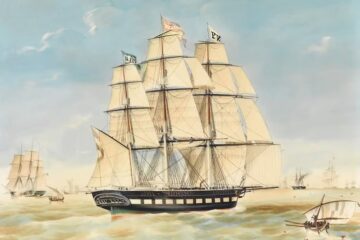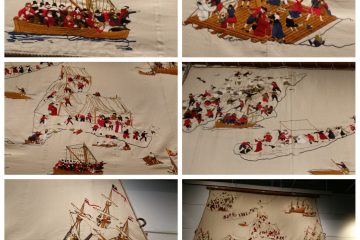The arrival of the RSV Nuyina, Australia’s state-of-the-art Antarctic icebreaker and research vessel, marks more than just a leap in polar capability—it also represents a powerful link between the Netherlands and Australia. Built at Damen Shipyards Galati in Romania, a facility owned by the Dutch Damen Shipyards Group, this ship embodies over 400 years of maritime collaboration and innovation connecting the two nations.
Commissioned by the Australian Government, the Nuyina (pronounced “noy-yee-nah” and meaning “southern lights” in Palawa Kani, the language of Tasmanian Aboriginal people) is one of the most advanced polar research vessels in the world. It replaces the Aurora Australis and significantly upgrades Australia’s ability to conduct year-round scientific operations in the Southern Ocean and Antarctica.
Dutch-Built Excellence
The Nuyina was designed and constructed by Damen Shipyards Group, with the primary construction taking place at their Galati yard in Romania. This shipyard, located on the banks of the Danube River, has a rich history dating back to 1893 and has been part of the Damen Group since 1999. Over the years, Damen Shipyards Galati has been responsible for some of the company’s largest and most complex vessel deliveries, including patrol ships, offshore vessels, ferries, dredgers, barges, tugs, superyachts, and naval vessels.
The construction of the Nuyina was a multinational effort involving the Australian Antarctic Division, the vessel operator Serco, Danish concept designers Knud E. Hansen, Damen’s engineering, detailed design and project management teams in the Netherlands, and the construction team at Damen Shipyards Galati in Romania.
A Floating Laboratory
At 160 metres long and displacing over 25,000 tonnes, the Nuyina serves as a multifunctional platform—combining icebreaking, cargo and fuel resupply, atmospheric and marine research, and helicopter operations. The ship’s capabilities place it among the most sophisticated polar vessels globally, enabling Australia to maintain its Antarctic presence and scientific leadership well into the future.
This floating laboratory is fitted with a moon pool, advanced sonar systems, a 500-square-metre science deck, and specialised laboratories to support diverse scientific missions. It can accommodate up to 117 expeditioners and crew, making it a vital lifeline to remote Antarctic stations.
A Symbol of Connection
While the Nuyina is a technological marvel, it is also a symbolic vessel, navigating both the literal and historical seas that link the Netherlands and Australia. The ship’s construction at a Dutch-owned shipyard—crafted by one of Europe’s most respected shipbuilders—reminds us that today’s scientific and environmental goals are often reached by building on historic ties.
The Netherlands’ long maritime history with Australia dates back to the early 1600s, when Dutch navigators charted the Australian coast. Centuries later, the construction of the Nuyina at a Dutch-owned shipyard adds a new chapter to that story—one of shared expertise, global collaboration, and a forward-looking partnership grounded in trust and capability.
Bridging Past and Future
The RSV Nuyina does more than support Antarctic exploration—it reflects the values that bind the Netherlands and Australia: innovation, scientific inquiry, environmental stewardship, and strong maritime heritage. As she sails between Hobart and the southern ice, the Nuyina carries not only researchers and supplies, but also a shared legacy of international cooperation and discovery.


